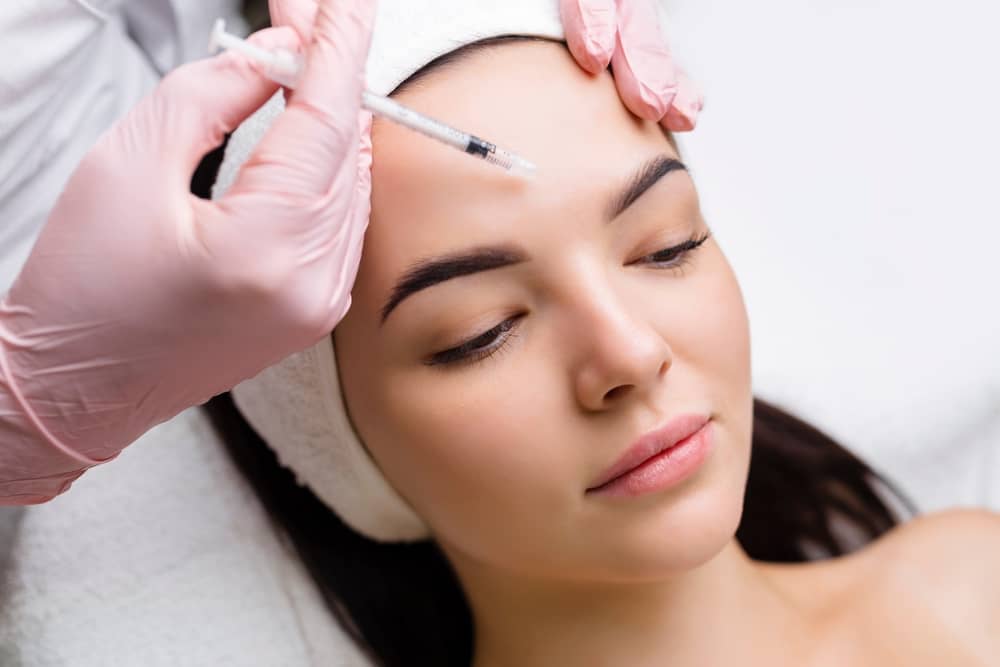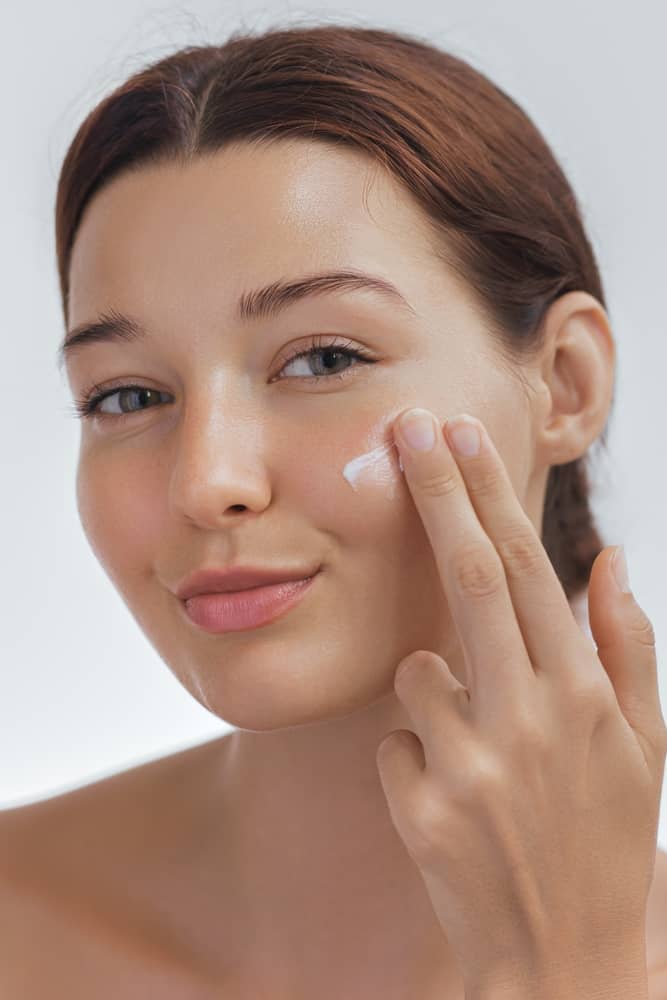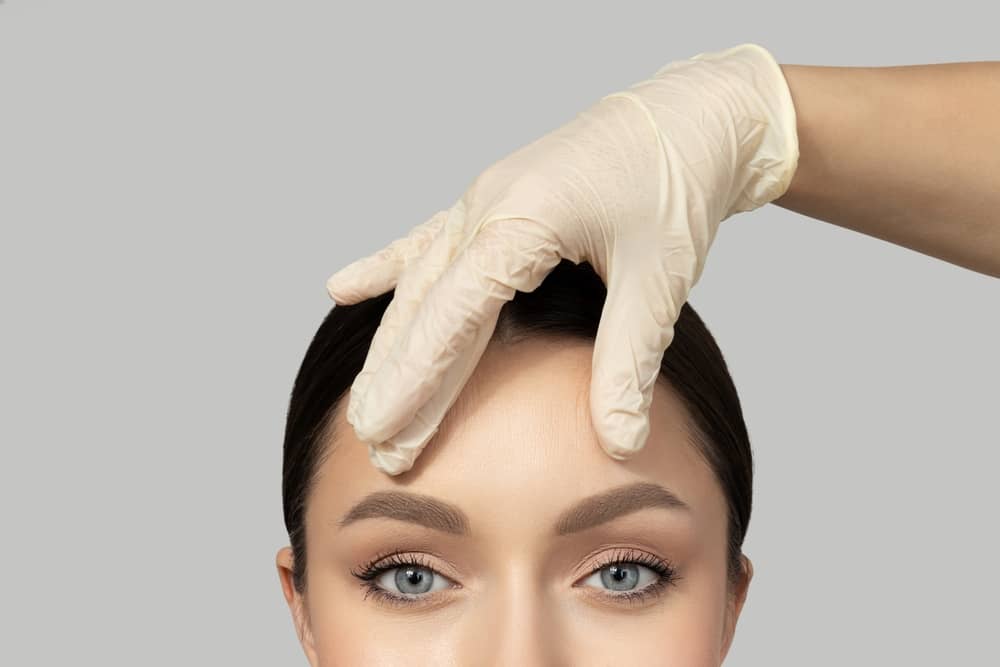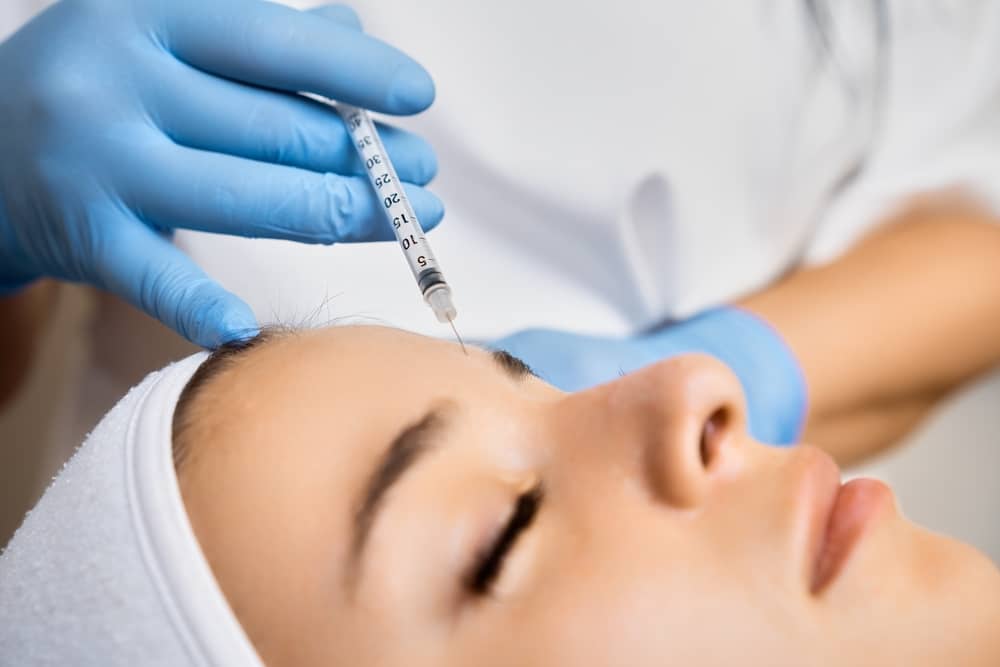Starting Botox at 25 may cause muscle atrophy, facial sagging, and resistance. Discover the dermatologist-shared warning timeline—and what med spas should teach Gen Z patients.
Gen Z’s Anti-Aging Investment May Backfire
If you run a med spa, you’ve probably noticed a shift at your front desk lately: more twenty-somethings booking “just a little preventative Botox.” They’re not chasing wrinkles—they’re chasing control.
Between 2019 and 2022, the number of people aged 20 to 29 receiving neuromodulator injections jumped 71 percent. Those 19 and younger? Up 75 percent.
TikTok calls it baby Botox—a way to “freeze aging before it starts.” It’s positioned as the ultimate investment in your future face.
The logic sounds airtight: stop the muscle movement now, and you’ll never form lines later. Med spas and influencers promise smooth foreheads forever. With more than 1.3 million #botox posts on TikTok and quarterly treatments running $400 – $600, Gen Z is investing heavily in “prevention.”
But here’s the twist dermatologists are now warning about:
That early prevention plan might be speeding up the very aging it’s supposed to stop.
A growing number of board-certified dermatologists and plastic surgeons now caution that starting Botox too early—and repeating it too often—can lead to long-term muscle atrophy, premature facial sagging, paradoxical wrinkle formation, and even total treatment resistance.
In short, the treatment meant to preserve youth may quietly be taking it away.
Year 1 – 2: When Results Look Perfect — But the Clock Starts Ticking
At first, everything looks flawless. Your patient’s forehead is smooth, crow’s-feet erased. They can’t stop checking the mirror.
Every three or four months, they’re back for maintenance—spending $1,600 – $2,400 a year. What started as 20 units slowly creeps to 25, then 30. The more they chase perfection, the higher the dose required to hold it.
It’s the honeymoon phase. Results are instant gratification, and no one sees the long game yet.

Year 3 – 4: When Smooth Turns to Strain
Around year three or four, the shift begins. The same amount of product doesn’t last as long. What held for four months now fades in ten weeks.
To compensate, many patients start booking sooner—or expanding treatment zones. Because the forehead muscles are frozen, the face recruits nearby muscles around the eyes, nose, and temples. New lines appear where none existed before.
Now, instead of one injection area, they’re treating three. Instead of $1,600 a year, they’re spending closer to $3,000.
What began as “prevention” has become pursuit.
Year 5 – 7: When the Muscles Begin to Fade
Underneath the skin, a quieter process is taking place—muscle atrophy.
Research in the Journal of Cosmetic Dermatology and multiple NIH studies confirms measurable loss of muscle thickness with repeated neuromodulator use.
One study tracking 12 patients found that even 0.5 to 3.5 years after stopping, muscle thickness was still 10.6 percent lower and strength 12.5 percent weaker.
The total cumulative dose—not just frequency—predicts how severe the atrophy becomes. Even 100 units total can cause lasting muscle loss.
Miami plastic surgeon Dr. Paul Durand warns:
“Too much Botox can cause too much muscle atrophy, which can make your face look hollow over time.”
As the muscles weaken, the overlying skin starts to look thinner, looser—exactly the opposite of youthful plumpness.
Year 7 – 10: When Resistance Sets In
By year seven, some patients start noticing something stranger: Botox just doesn’t seem to work anymore.

They join the 53.9 percent of aesthetic doctors who report seeing patients develop Botox resistance. While complete resistance remains rare (about 1.5 – 3.6 percent), partial or secondary resistance—where Botox fades faster or fails entirely—is on the rise.
Why? Frequent injections (less than three months apart), high cumulative doses, and unnecessary “booster” sessions.
When resistance develops, patients face three choices:
- Switch to another neuromodulator (Dysport, Xeomin, Jeuveau).
- Increase the dose—accelerating muscle loss.
- Stop treatment and wait months for muscle recovery.
But after years of inactivity, those muscles may not bounce back evenly. As bone structure and fat pads shift with age, the weakened framework can cause unexpected sagging.
The Decade-Long Price of “Prevention”
Run the math: ten years of quarterly Botox at $500 per session adds up to $20,000—before resistance, dose increases, or new treatment zones.
Push harder, and it’s easy to surpass $30,000 by your mid-thirties.
And for what?
Dermatologist Dr. Brooke Jeffy sums it up best:
“For most people in their twenties, Botox is mostly unnecessary and merely a source of anxiety… we don’t see any wrinkles, but this is what they are anxious about.”
As aesthetic professionals, we can empathize. Gen Z patients are growing up in a world where every pore is magnified and every expression filmed. Their anxiety is real—but so is the long-term cost of feeding it with unnecessary injections.
What Science Actually Says
Evidence #1: Muscle Atrophy Is Real and Lasting
A 2023 Plastic and Reconstructive Surgery study, “Long-Term Muscular Atrophy and Weakness Following Cessation of Botulinum Toxin,” documented permanent structural changes in facial muscles after repeated injections. Muscle thickness reduction persisted up to four years after the last treatment.
A 2016 Aesthetic Surgery Journal study found muscle size reduction peaked at six months (-19.6 %) and remained at -13.4 % a year later.
“Reduced muscle size persisted,” the authors concluded.
Evidence #2: Resistance Is on the Rise
A 2024 Dermatologic Surgery survey found 53.9 % of clinicians had seen toxin resistance. The top culprits: short treatment intervals (48.3 %), high dosage (21.8 %), and formulations with complexing proteins (20.9 %).
New York dermatologist Dr. Michele Green told the New York Post (March 2025):
“With repeated injections of the same neuromodulator, some patients may develop antibodies… When this occurs, patients can experience diminished and shorter-lasting effects.”
Evidence #3: Younger Patients Are at Higher Risk
A 2022 Botulinum Toxin Type A Resistance study confirmed that antibody development directly correlates with injection frequency and total dose. Intervals shorter than three months sharply increase risk.
A 2025 JMIR Dermatology review added that improper handling and older formulations (like Botox and Dysport containing complexing proteins) heighten immunogenicity, while protein-free Xeomin shows resistance rates near 0 – 0.5 %.

Evidence #4: Dermatologists Advise Waiting
According to the Cleveland Clinic (2024):
“There’s no hard data to say that Botox prevents wrinkles.”
Dr. James Zins explained that while Botox may train muscles to be less active, “the long-term consequences of deliberately weakening facial muscles in your twenties remain understudied.”
Dr. Shereene Idriss told CNN (January 2024):
“Save your money and go to Europe. Come back when your first signs of aging are printed on your face.” She emphasized that the current trend is driven by social media anxiety, not medical necessity.
Evidence #5: The Paradoxical Aging Effect
Vogue (2023) cautioned that “too much, too fast will age you.” When the forehead stops moving, other muscles overcompensate, forming new wrinkles elsewhere.
USA Today (September 2024) reported that some over-treated Gen Z patients look “almost robotic”—younger skin overlaying an older, expressionless face.
What You Should Recommend Instead
If They Haven’t Started Yet: Advise Patience

Unless a patient has deep, static wrinkles visible at rest, Botox can wait. Most dermatologists agree the sweet spot begins in the mid-30s to early 40s.
Encourage healthier anti-aging investments first:
- Daily SPF 30 + — still the #1 wrinkle-prevention strategy.
- Medical-grade retinoids (tretinoin or OTC retinol).
- Antioxidants like vitamin C, niacinamide, or resveratrol.
- Professional treatments such as chemical peels, microneedling, or laser resurfacing.
These deliver tangible, cumulative skin health benefits—without the neuromuscular compromise.
If They’ve Already Started: Teach Smart Moderation
Help patients protect their long-term results:
- Extend intervals — shift from every 3 months to 4 – 6.
- Lower the dose — find the minimum effective units.
- Take breaks — allow six to twelve months of recovery every few years.
- Switch formulations — Xeomin’s protein-free formula shows lower resistance rates.
Education here builds trust—and repeat business that isn’t rooted in dependency.
If You’re a Med Spa Owner: Educate, Don’t Exploit
The preventative-Botox boom is a test of ethics as much as marketing.
Yes, younger demographics are profitable—but the practices that endure are those that prioritize outcomes over volume.
Build protocols that protect both your reputation and your patients:
- Age & assessment requirements for patients under 30.
- Written education on atrophy, resistance, and paradoxical aging.
- Alternative options like sunscreen, retinoids, and balanced lifestyle plans.
- Transparent pricing showing lifetime costs—$20,000 + over a decade—before treatment begins.
Every honest consultation you give creates a patient who trusts you for life.

The Content That Converts: Trustworthy Education
If you’re a medical spa owner looking to build authority and attract informed, high-value clients, the answer isn’t fear-based marketing or influencer partnerships. It’s evidence-based content that demonstrates your commitment to patient outcomes over profit.
Your ideal patients—those who will trust you for decades and refer their friends—want providers who:
- Cite peer-reviewed research, not TikTok trends
- Recommend waiting when appropriate
- Explain risks transparently
- Prioritize natural results over frozen faces
- Build long-term relationships based on education and trust
Here’s How to Get Your Med Spa’s Content Strategy
If you’re a plastic surgeon, dermatologist, or medical spa owner looking to attract informed patients who value expertise over discounts, the answer isn’t flashier ads or influencer partnerships—it’s educational content grounded in science.
As a board-certified nurse with specialized training in medical aesthetics copywriting, I work with practices that prioritize long-term patient relationships over quick conversions. That means blog articles, patient education materials, and website content that answer real questions, cite actual research, and reflect the integrity of your clinical practice.
No exaggerated claims. No fear-mongering. Just clear, evidence-based information that helps patients make informed decisions—and positions you as the expert they can trust.
Here’s how to start: Book a complimentary 30-minute strategy session to explore whether custom educational content makes sense for your practice. We’ll discuss your patient demographics, competitive landscape, and content gaps—with no pressure, no pitch, just a conversation about what works.
Schedule Your Free Consultation
This complimentary 30-minute strategy session to discuss how custom educational content can:
• Increase organic search traffic from high-intent patients
• Establish your practice as the authority on evidence-based aesthetics
• Attract clients who value expertise over discounts
• Build trust before patients ever walk through your door
Schedule Your Free Consultation
Let’s create content that reflects the quality of care you provide—and the integrity your patients deserve.
References
• American Society of Plastic Surgeons. (2023). Cosmetic Surgery National Data Bank Statistics.
• Ascher, B., et al. (2022). Botulinum Toxin for Cosmetic Treatments in Young Adults: An Evidence-Based Review. Wiley Online Library.
• Clemens Face + Body. (2025). Are You Developing Resistance to Botox?
• CNN. (2024). It’s Not Just ‘Sephora Kids.’ 20-Somethings Are Paying Up for Cosmetic Procedures.
• Cleveland Clinic. (2024). Does Preventative Botox Really Work?
• Green, M. (2025, March 14). Quoted in New York Post: Botox Use Has Become So Frequent That Youth-Chasers Are Developing Immunity.
• LeVogue Med Spa. (2025). Cost of Botox: What You Must Know Before Booking.
• NIH/PMC. (2023). Long-Term Muscular Atrophy and Weakness Following Cessation of Botulinum Toxin Injections. Plastic and Reconstructive Surgery.
• NIH/PMC. (2024). Aesthetic Doctors’ Perception and Attitudes Toward Tolerance in Botulinum Toxin. Dermatologic Surgery.
• NIH/PMC. (2025). Evaluating the Preventive Role of Botulinum Toxin in Facial Aging: A Systematic Review.
• Oh, S.M., et al. (2024). Resistance to Cosmetic Botulinum Toxin A: A 15-Patient Case Series. JMIR Dermatology.
• USA Today. (2024, September 4). Gen Z Is Obsessed with Botox. It’s a Problem.
• Vogue. (2023, October 19). Why Preventative Botox Injections Could Be Aging You.

View comments
+ Leave a comment